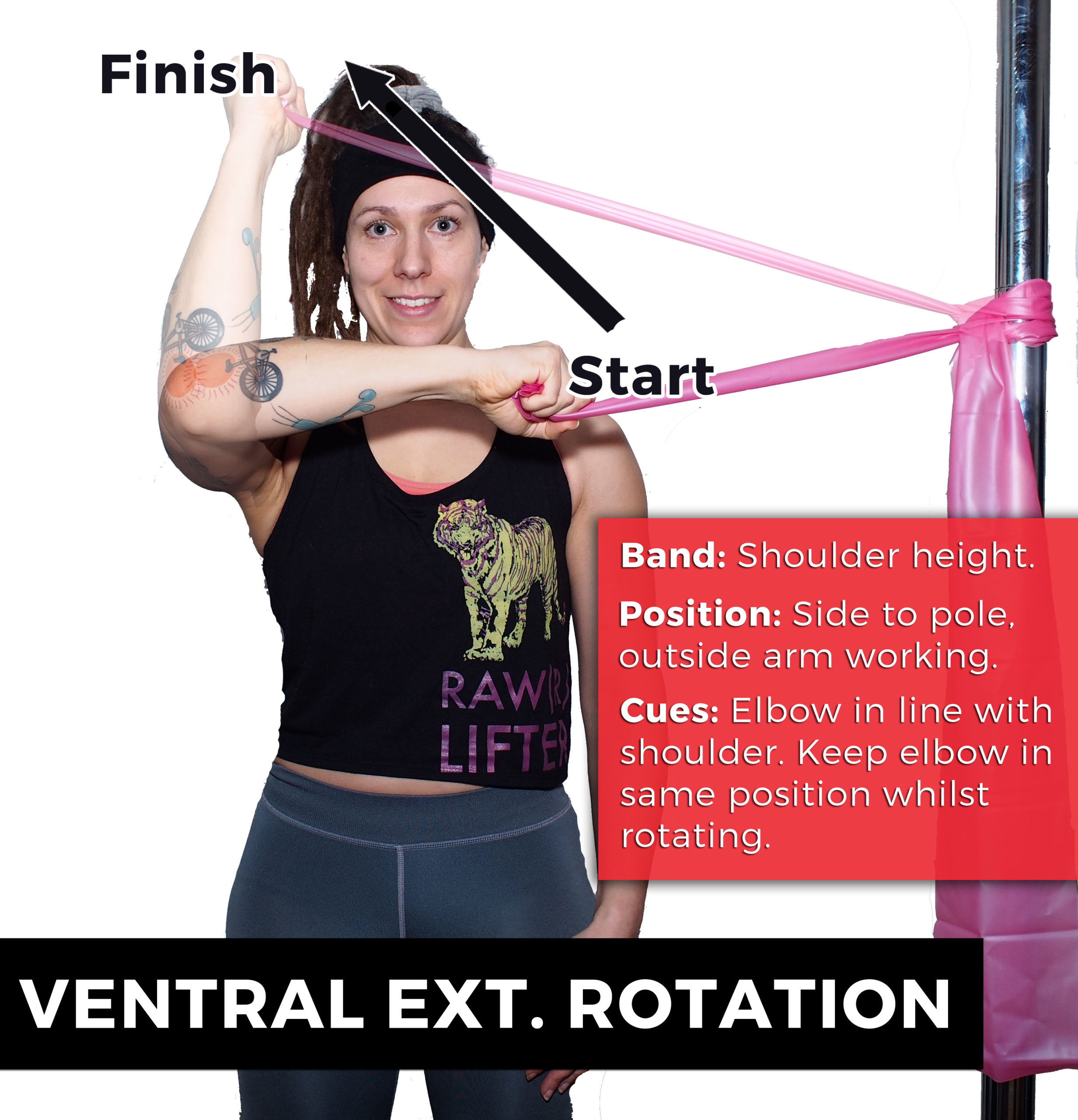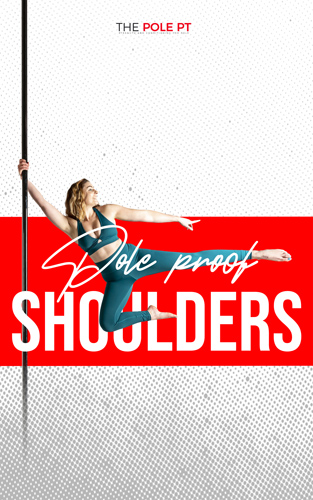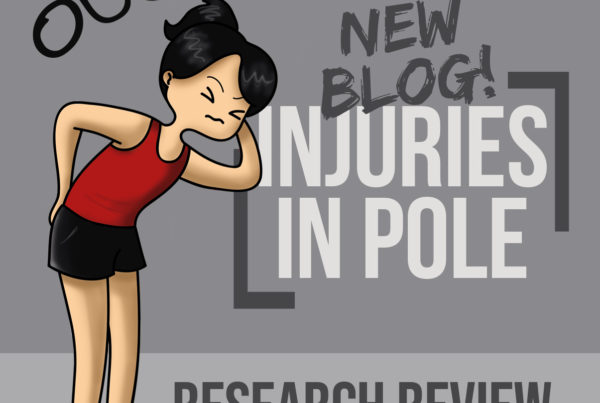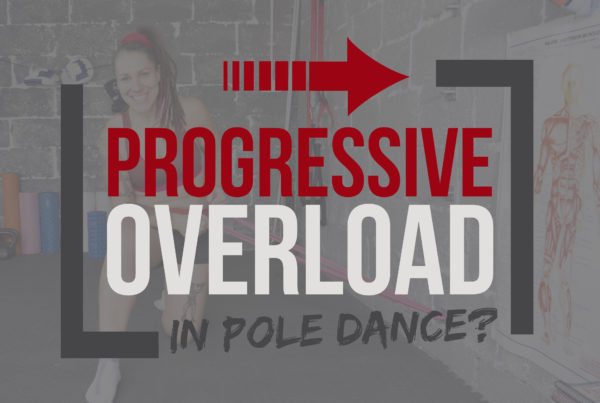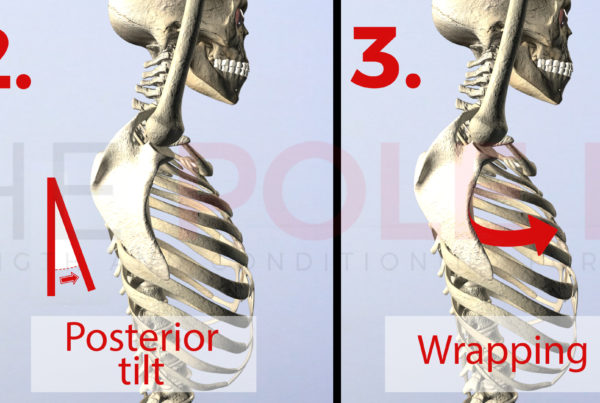This post was originally written (by me) for United Pole Artists and is reproduced here with their permission and updated.
Peanut butter, pork crackling, the sound of snow under-foot on a crisp winter’s day – these things are gloriously, satisfyingly crunchy. One thing that probably shouldn’t be quite so crunchy, however, is shoulders!
I think it was about 6 months after I started pole when I first noticed that every rotation of my left shoulder sounded like loose change being sucked up a vacuum cleaner. Crunch, kaclick, crunch. I knew I should be a little more proactive about taking care of my pole shoulders if I was going to keep poling for years to come! I started incorporating more shoulder mobility and strength drills into my workouts and never looked back.
Thankfully, I no longer have to describe my shoulders as “…. erm….crunchy”, but whether you are feeling it or not, pole is pretty intense on our shoulders.
They are are one of the most commonly injured areas for pole dancers (you can read more about the studies on this here), so it’s an area that we need to give a little extra love!
“Pre-hab” or “injury risk reduction” strategies now form a big part of the exercise programming that I do for my pole dancing clients. If you want to build shoulders that can take on twisted grip handsprings and flying phoenixes, read on!
Why does the shoulder seem so fragile?
The shoulder, unlike most of our joints, can move in multiple planes of motion. It’s that wide range of mobility which allows us to contort our bodies into crazy-ass positions like bridges, twisted grips and even just simple spins around the pole.
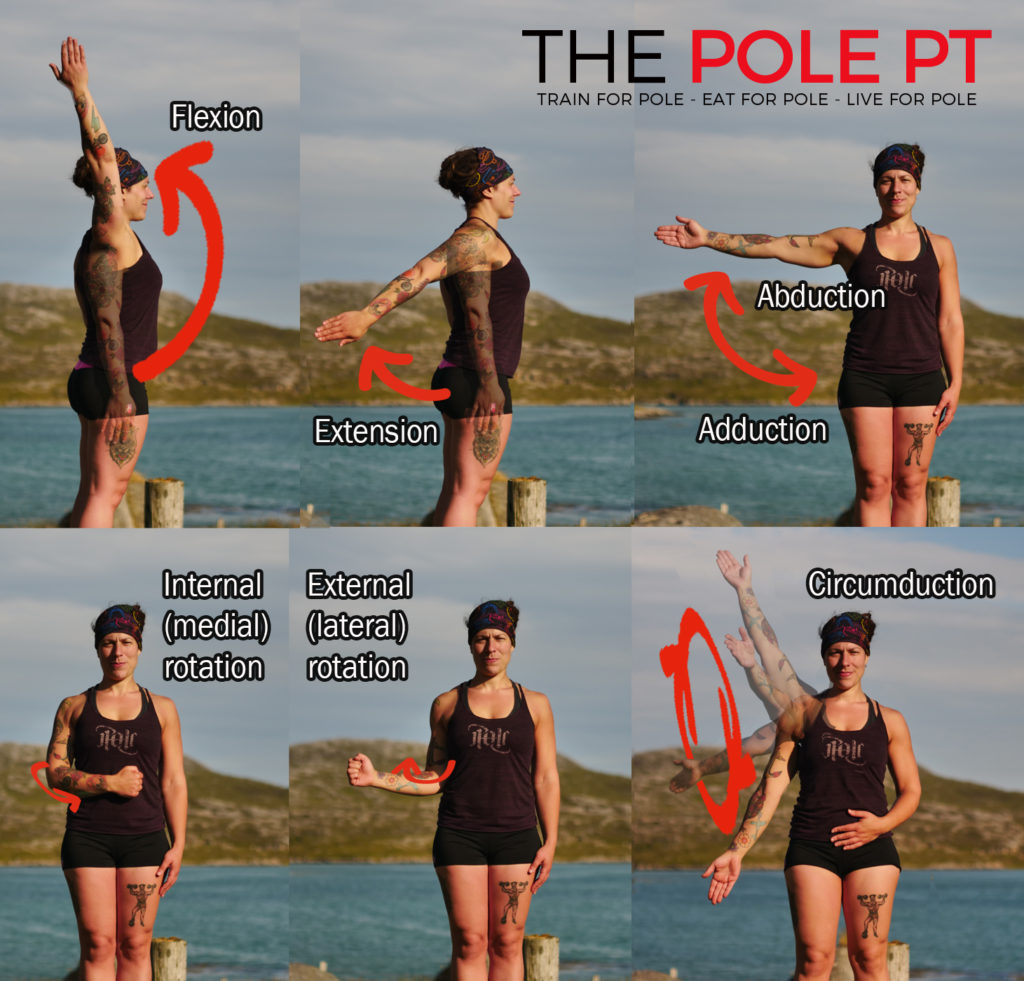
But whilst we’re busy twirling ourselves into beautiful shapes, swinging and dangling from our arms, there are a number of stabilising muscles all busting their balls behind the scenes to keep our humerus (arm) in the most optimal position for whatever crazy contorted position we’re working on today.
The main muscles responsible for shoulder stability are a group of muscles and tendons called the rotator cuff. And the reasons why shoulder injuries are so common in pole is:
- Those rotator cuff muscles (supraspinatus, infraspinatus, teres minor, and subscapularis) are pretty small, and we put a huge demand on those poor little muscles even during very basic pole moves.
- We don’t tend to train the shoulder in all its different ranges of motion and we often simply don’t know how to ‘engage’ certain muscles to keep us in the most optimal shoulder position. The muscles of the shoulder and those around it, including the lats and pecs that can have an impact on our shoulder positioning, can become ‘imbalanced’ and we may end up over-relying on some muscles and under-using others. This can lead to inefficient movement mechanics over time.
- We do a LOT of overhead movement in pole. Overhead movement requires good scapula mechanics and a good range of shoulder mobility. We don’t do a huge amount of overhead movement in our muggle lives, so it’s an area some people can really struggle with, without even realising it.
The shoulder drills that follow are designed to strengthen the rotator cuff in all of the different planes of motion, so that it is better equipped to cope with the stress we put on it when we go all pole-ninja mode.
There are SO MANY different ways to train the rotator cuff, but I selected the following exercises as a kind of rotator cuff ‘starter pack’ that hits all the key elements.
A resistance band or set of small dumbbells will work well for these, especially if you’re new to these kinds of exercises. For the demos below, I’ve simply used a resistance band and a pole.
What’s the point of these shoulder drills?
These shoulder drills target all the different muscles of the rotator cuff in its different planes of motion. As part of a balanced training programme, they can help to increase your endurance on the pole and help to reduce the risk of shoulder injuries. Each movement targets the rotator cuff in a slightly different way.
When to do them?
These drills work well as part of a pole warm up.
How to do them?
Simple – tie your resistance band to your pole and follow the instructions below.
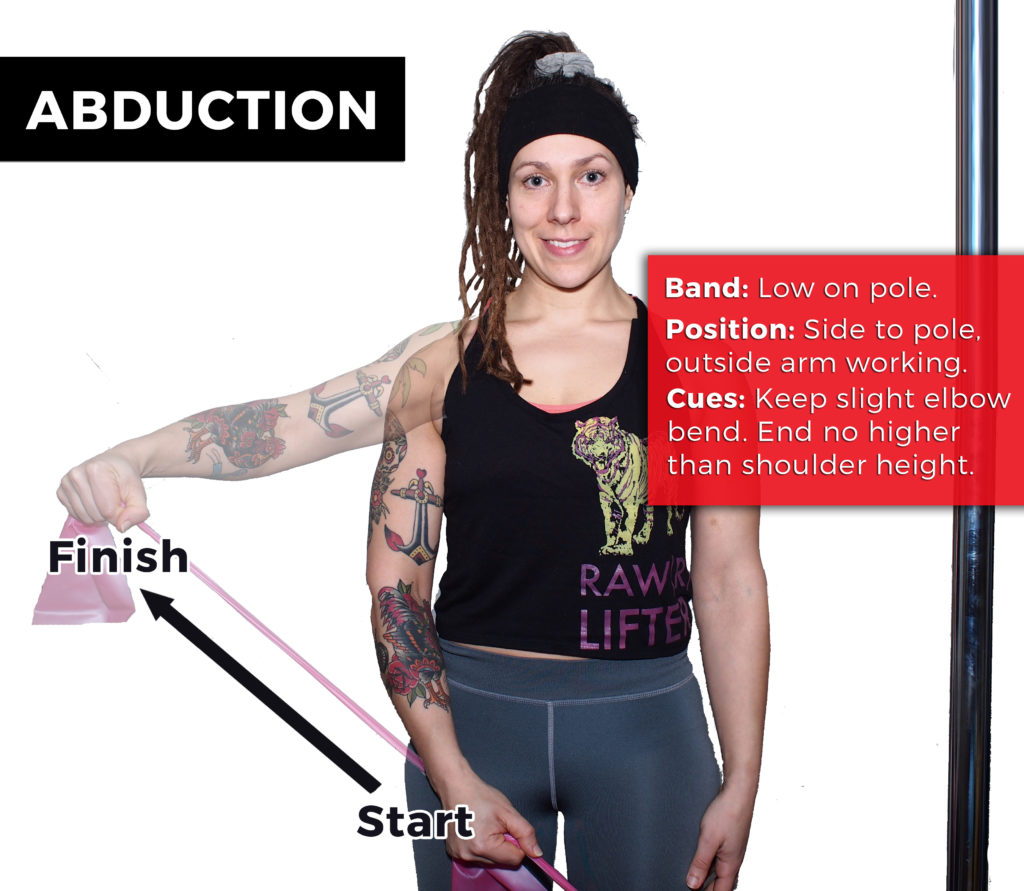
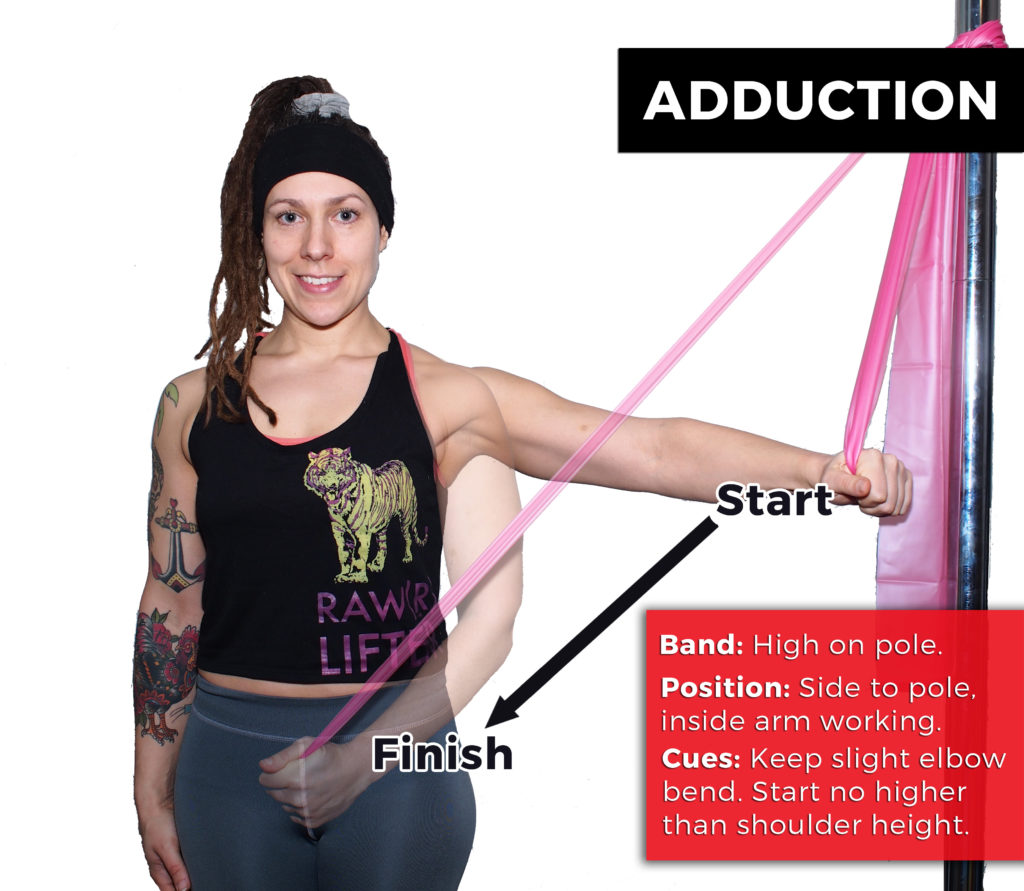
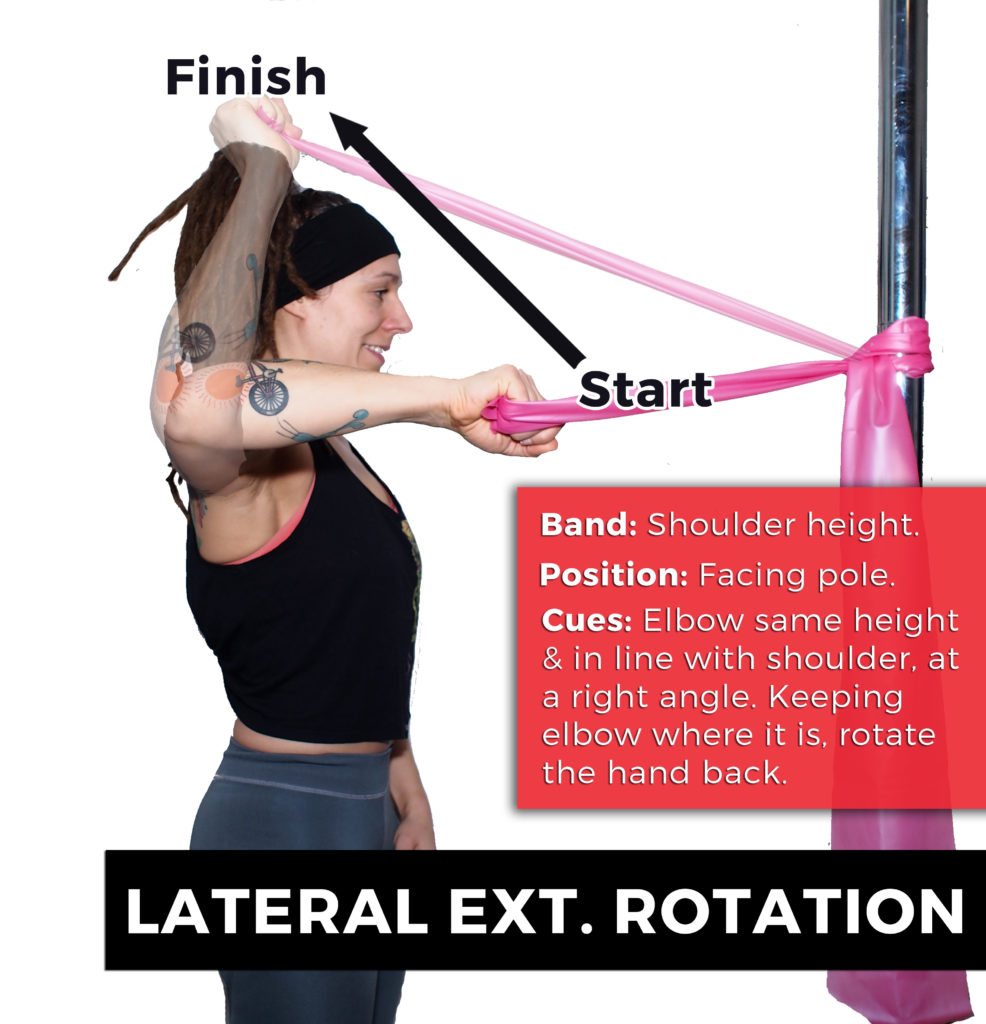
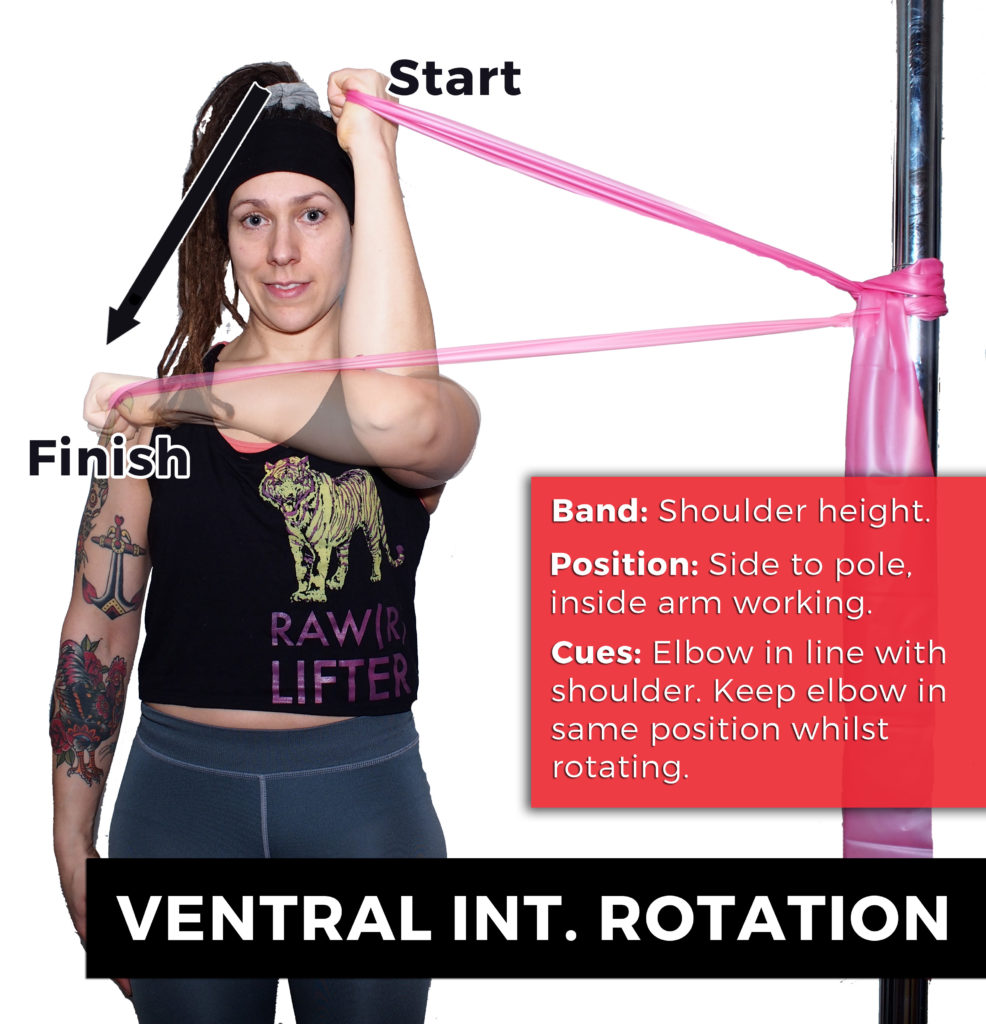
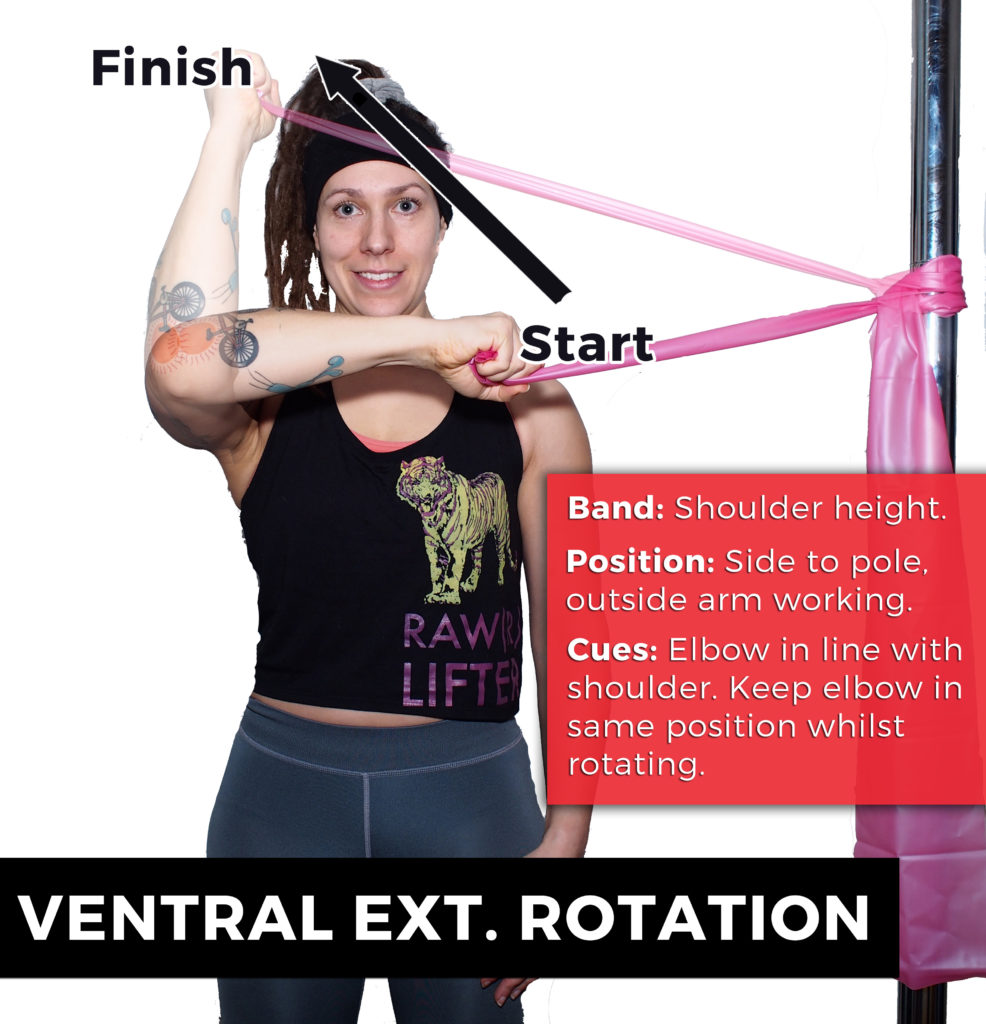
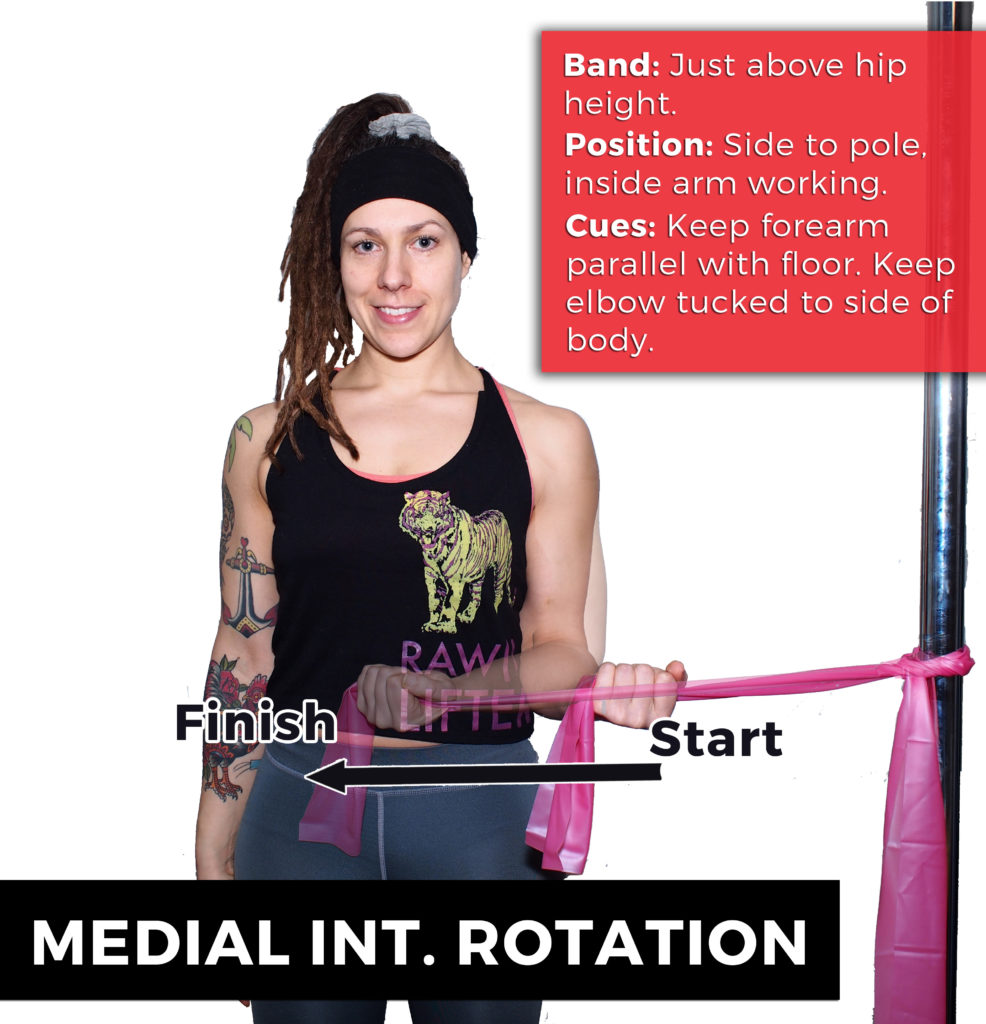
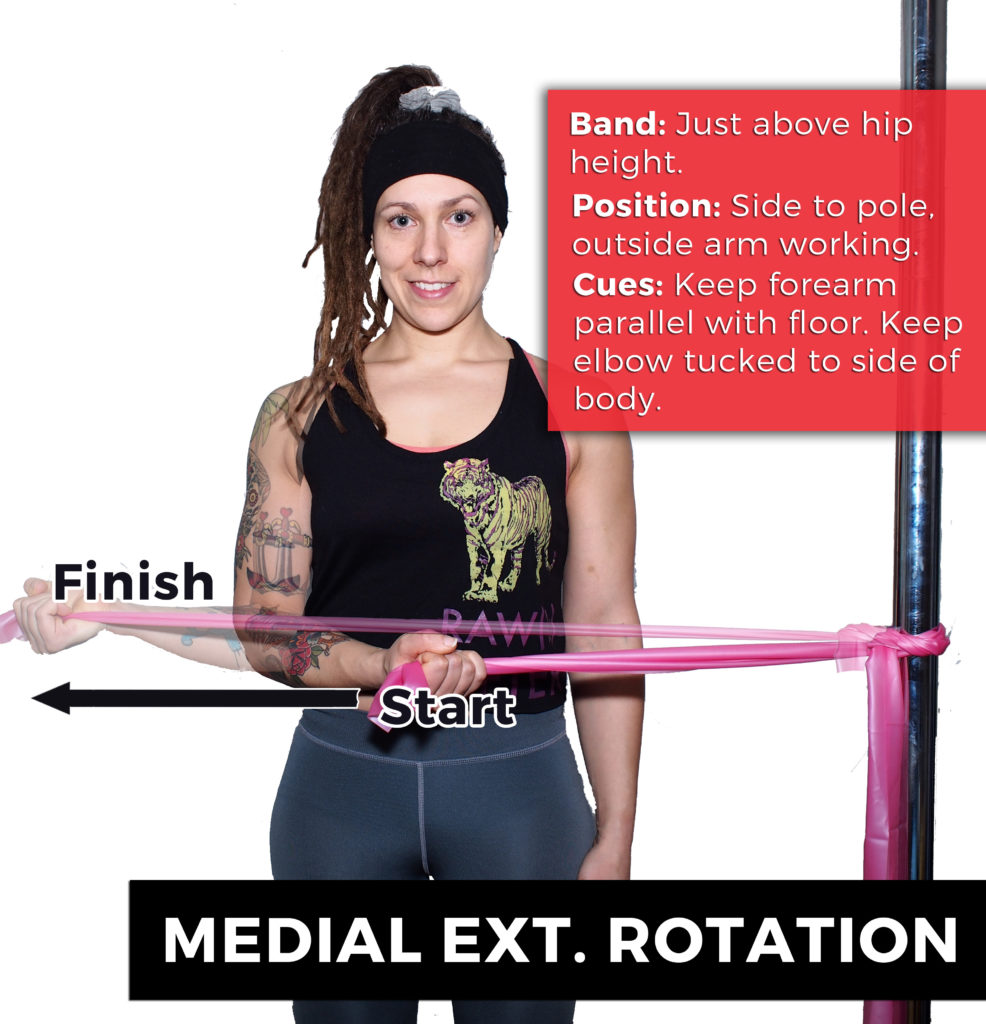
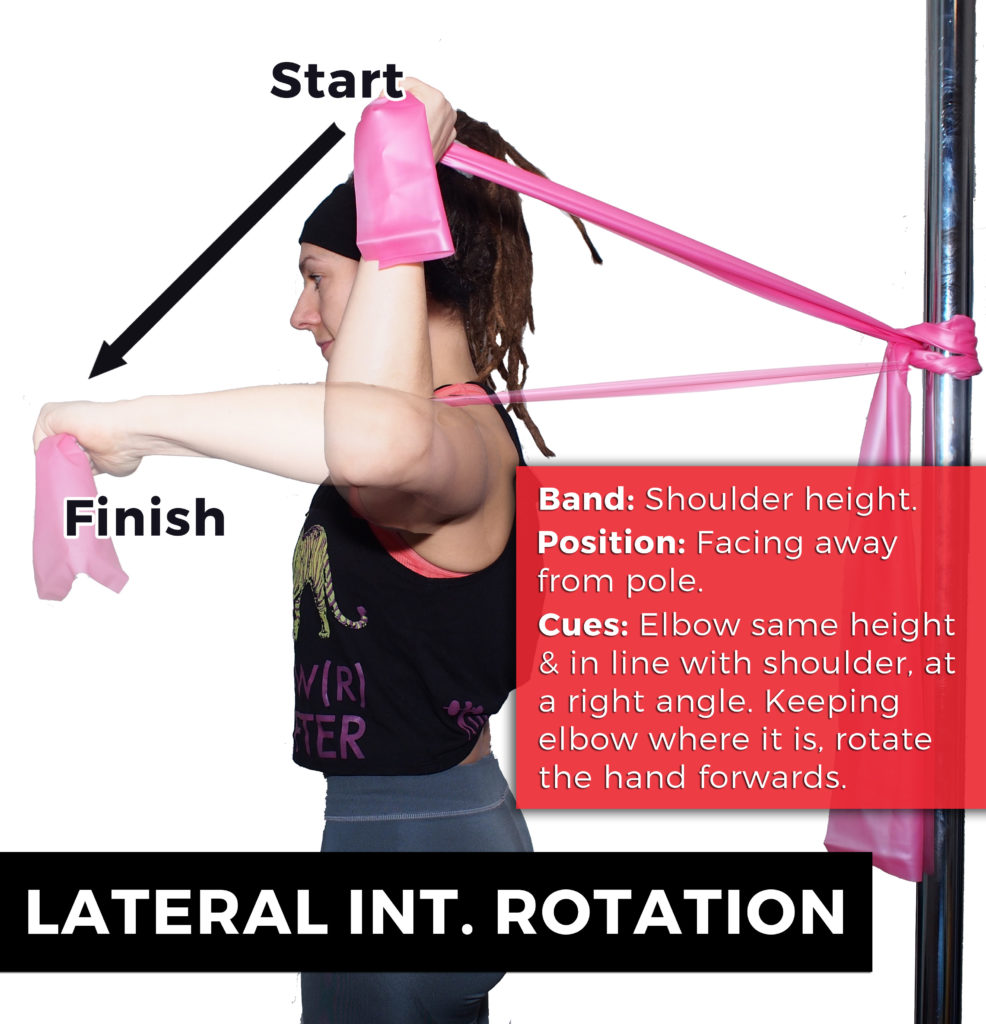
There are 8 exercises. Aim for 10-15 reps of each one – and then repeat for a couple of sets as part of your warm up. For all of the exercises, keep your core engaged and everything nice and still except the arm that’s moving – try not to arch your back or flare your ribs!
I hope this helps someone! Shoulder health is so important in pole, it really can’t be stressed enough. If you’re serious about pole then you need to get serious about your shoulders!
If you’d like to start a regular shoulder care practice for your pole shoulders that will help you to manage injury risk and improve your shoulder strength and mobility so you can progress to more advanced moves – check out my Pole Proof Shoulders programme! >>>Pole proof shoulders – the ultimate shoulder care and strength package for pole dancers!<<<
Questions? Just ask! + Please tag me on social media with your shoulder wins – I love to celebrate with you all!
If you’d like to geek out more with me on the anatomy of pole dance, or you want more details on how to programme these exercises, check out my books – Strength and Conditioning for Pole – and Pole Anatomy – both available now in hard copy or as a downloadable ebook.


